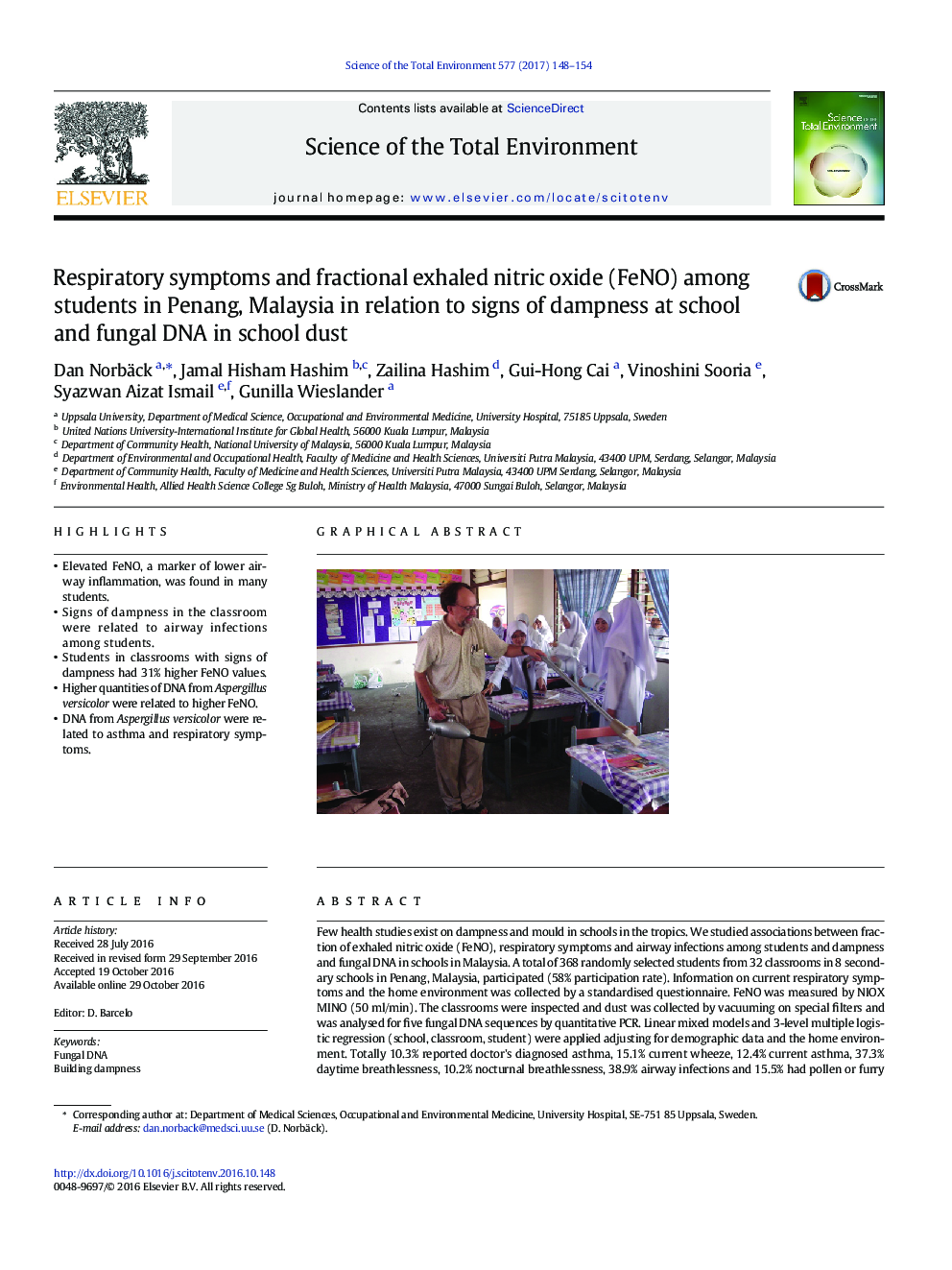| کد مقاله | کد نشریه | سال انتشار | مقاله انگلیسی | نسخه تمام متن |
|---|---|---|---|---|
| 5751713 | 1619714 | 2017 | 7 صفحه PDF | دانلود رایگان |

- Elevated FeNO, a marker of lower airway inflammation, was found in many students.
- Signs of dampness in the classroom were related to airway infections among students.
- Students in classrooms with signs of dampness had 31% higher FeNO values.
- Higher quantities of DNA from Aspergillus versicolor were related to higher FeNO.
- DNA from Aspergillus versicolor were related to asthma and respiratory symptoms.
Few health studies exist on dampness and mould in schools in the tropics. We studied associations between fraction of exhaled nitric oxide (FeNO), respiratory symptoms and airway infections among students and dampness and fungal DNA in schools in Malaysia. A total of 368 randomly selected students from 32 classrooms in 8 secondary schools in Penang, Malaysia, participated (58% participation rate). Information on current respiratory symptoms and the home environment was collected by a standardised questionnaire. FeNO was measured by NIOX MINO (50 ml/min). The classrooms were inspected and dust was collected by vacuuming on special filters and was analysed for five fungal DNA sequences by quantitative PCR. Linear mixed models and 3-level multiple logistic regression (school, classroom, student) were applied adjusting for demographic data and the home environment. Totally 10.3% reported doctor's diagnosed asthma, 15.1% current wheeze, 12.4% current asthma, 37.3% daytime breathlessness, 10.2% nocturnal breathlessness, 38.9% airway infections and 15.5% had pollen or furry pet allergy. The geometric mean of FeNO was 19.9 ppb and 45% had elevated FeNO (> 20 ppb). Boys had higher levels of FeNO. Chinese had less daytime breathlessness than Malay (OR = 0.30: p < 0.001). Indoor carbon dioxide levels were low (380-720 ppm). Dampness was observed in 18% of the classrooms and was associated with respiratory infections (OR = 3.70; 95% CI 1.14-12.1) and FeNO (p = 0.04). Aspergillus versicolor DNA was detected in 67% of the classrooms. Higher numbers of Aspergillus versicolor DNA in classroom dust were associated with wheeze (p = 0.006), current asthma (p = 0.002), respiratory infections (p = 0.005) and elevated FeNO levels (p = 0.02). In conclusion, respiratory symptoms were common among the students and the high FeNO levels indicate ongoing airway inflammation. Building dampness and the mould Aspergillus versicolor in schools in Malaysia can be risk factors for impaired respiratory health among the students.
307
Journal: Science of The Total Environment - Volume 577, 15 January 2017, Pages 148-154